In this lesson, you will learn how to complete the DFR and upload it to FlightSpan™ Ops.
LEGS Section
If you are equipped with v2track when you select the DFR tab, this is what you will see, since FlightSpan™ has been capturing data from v2track and recording it in the LEGS section throughout the day. First look for and correct any errors in the automatically collected data (columns 2-6 and 10).
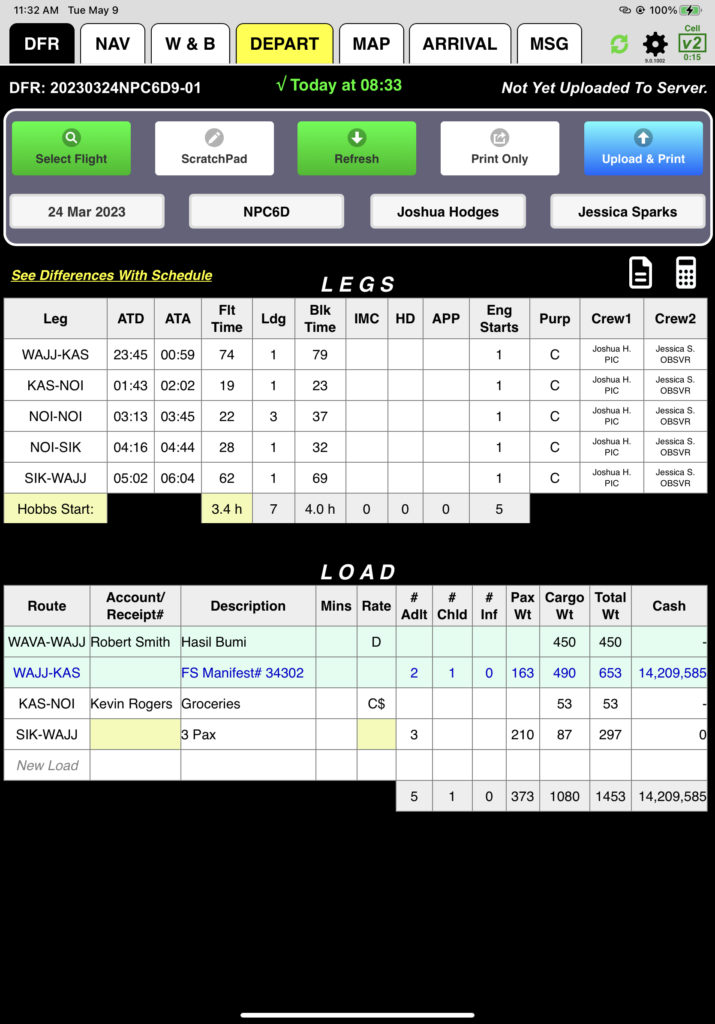
Note: Depending on company settings, you will not be able to change ATD or ATA.
If you are not equipped with v2track, you will need to fill out all LEGS fields manually. Go ahead and fill out the missing data by tapping on each cell in the ATD, ATA, Flt Time, Ldg, and Blk Time columns, and entering the values. (Note that since you don’t know the actual Block times, the easiest way to enter them is with a Block Out time of 00:00 and a Block In time that will give the desired result.)
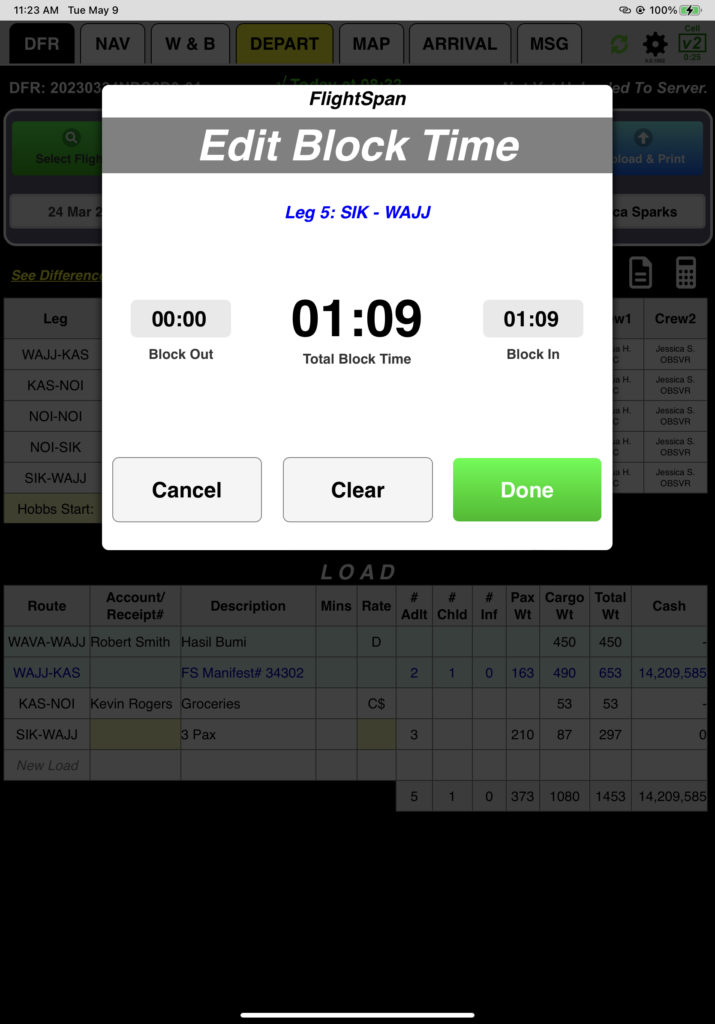
Since it was a good VFR day, leave the IMC column blank, but enter the hood time in the HD column for the SIK-WAJJ leg. Select 36 minutes.
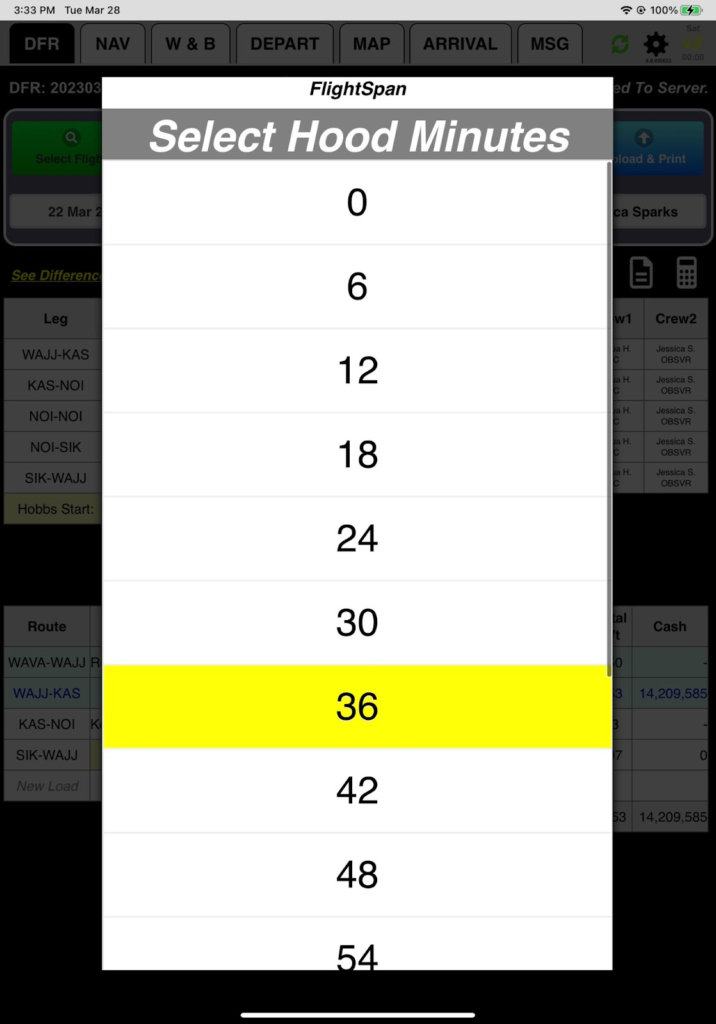
You didn’t have a chance to practice any instrument approaches, so leave the APP column blank.
In the Purp column, change the NOI-NOI leg’s purpose code to Y-YAJ (your company code for internal expenses like training).
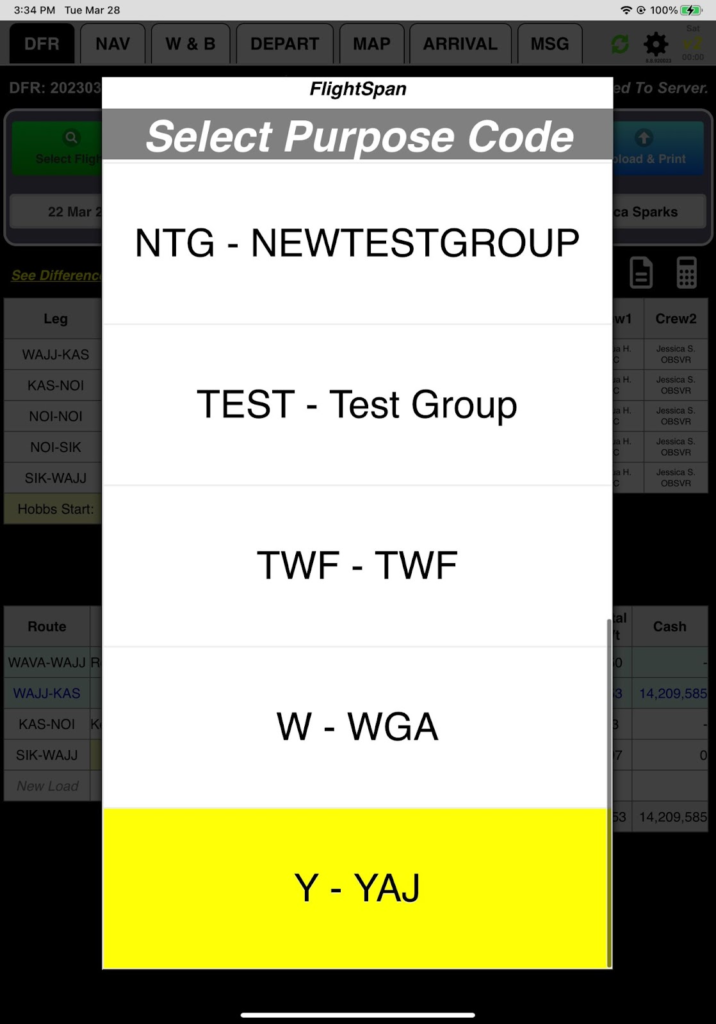
Change the NOI-SIK and SIK-WAJJ purpose codes to Medevac.
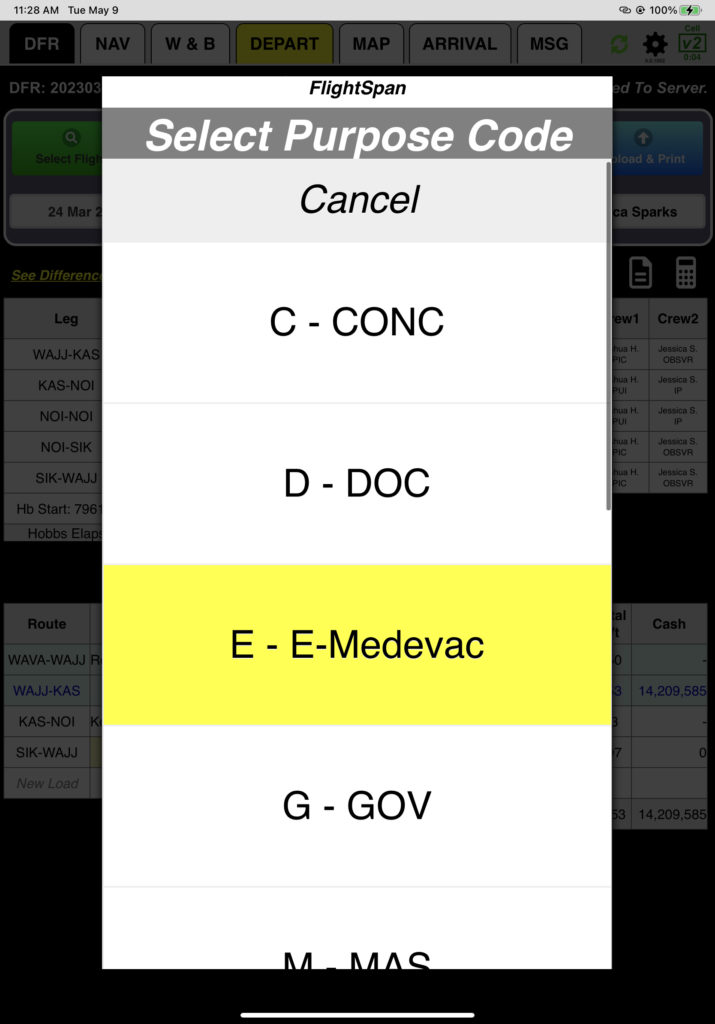
On the KAS-NOI and NOI-NOI legs, change the crew roles by tapping on either name in the correct rows. Make Joshua PUI and Jessica IP.

Now enter your beginning and ending Hobbs times. Tap on Hobbs Start and enter 7961.8.
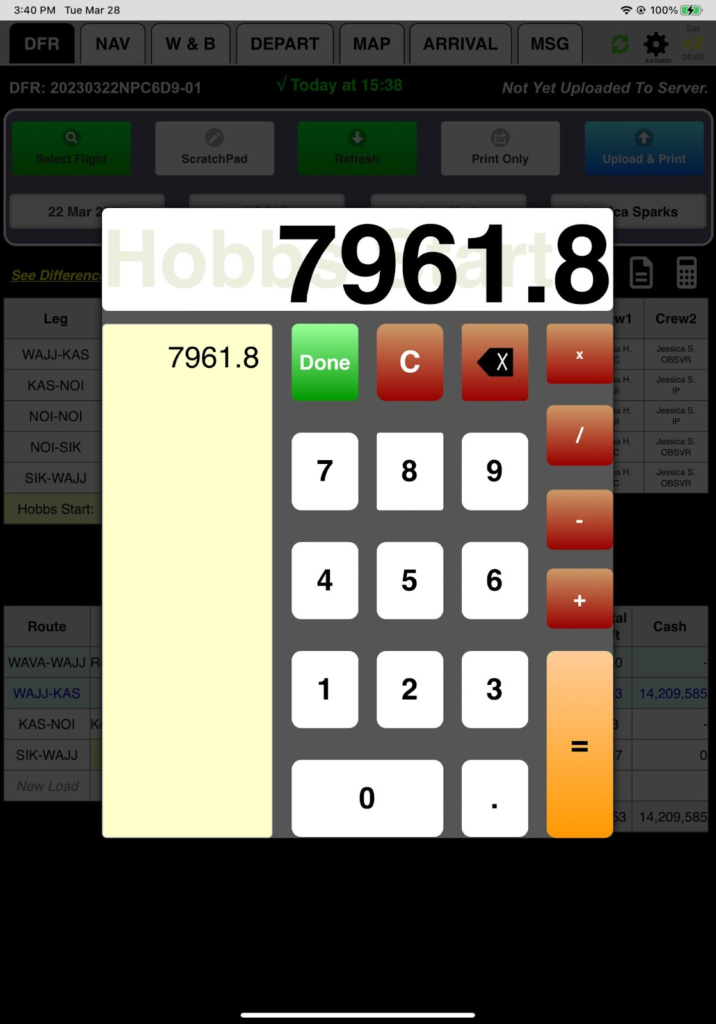
Do the same with the ending Hobbs time of 7965.3. Note that there is a 0.1 discrepancy between Hobbs time and Flight Time, with Flt Time highlighted yellow. This is relatively common since Hobbs is measuring in 6 minute increments, and FlightSpan™ is measuring in 1 minute increments.
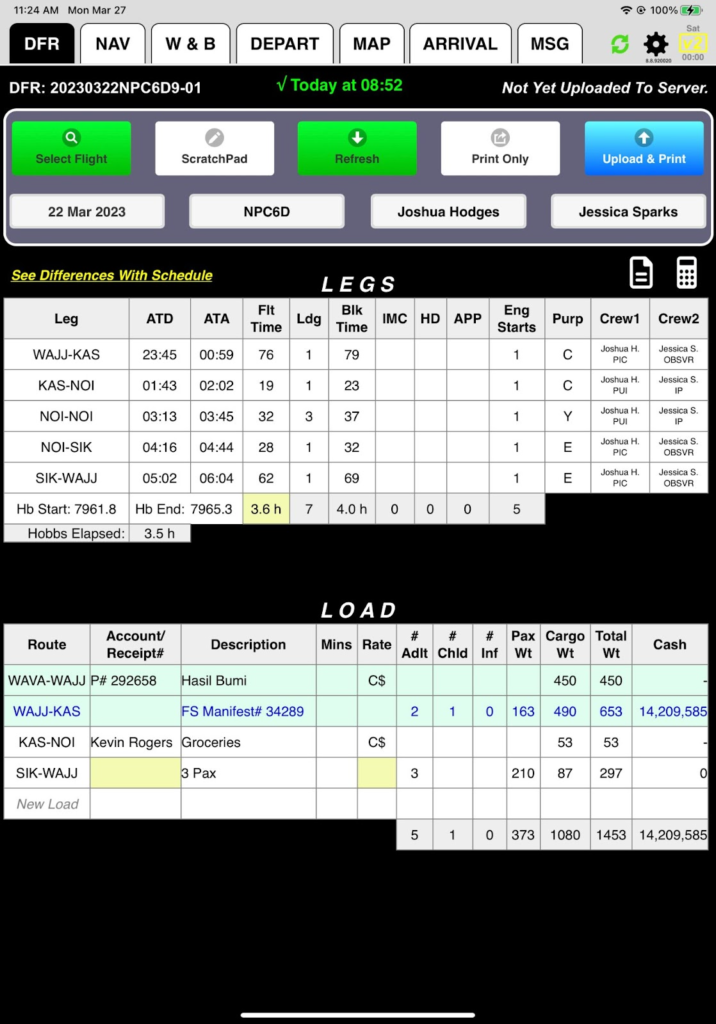
Pick a leg on the flight and increase the flight time in one minute increments until flight time and Hobbs match. To minimize the percentage increase, it’s usually wise to pick your longest leg. In this case, adjust the WAJJ-KAS leg to 76 minutes, and the times will match. Once complete, your LEGS section should look like this:
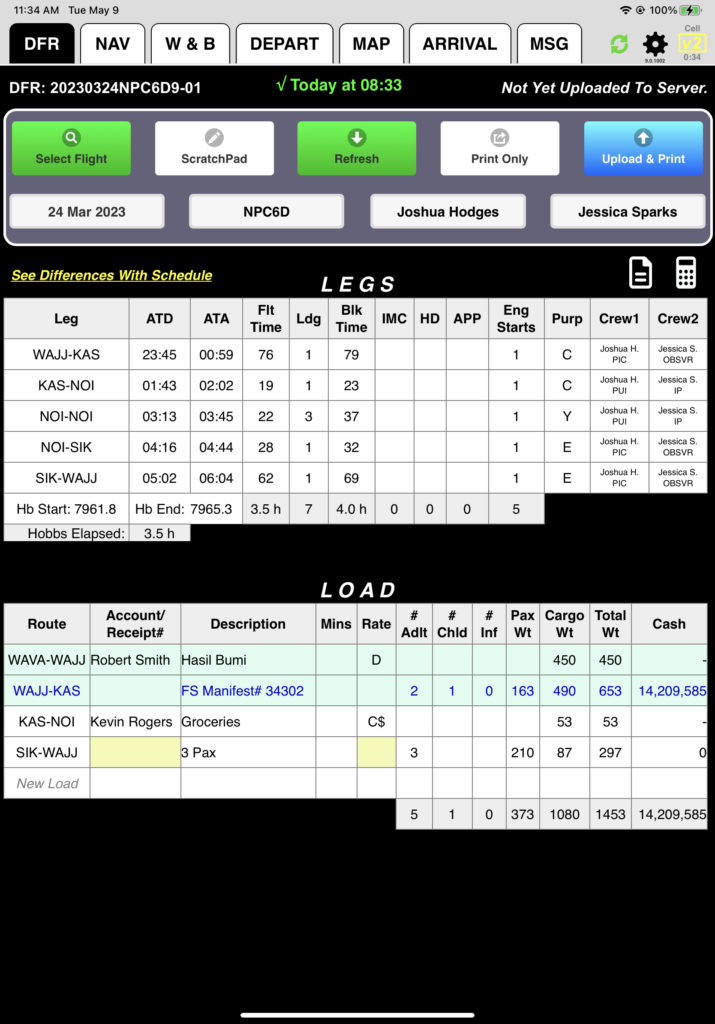
Note: The requirement for Hobbs to match flight time can be switched off in FlightSpan™ Ops.
LOADS section
Since you didn’t fly the WAVA-WAJJ load, you’ll need to delete it.

Tap on the WAVA-WAJJ leg and select Delete This Load.
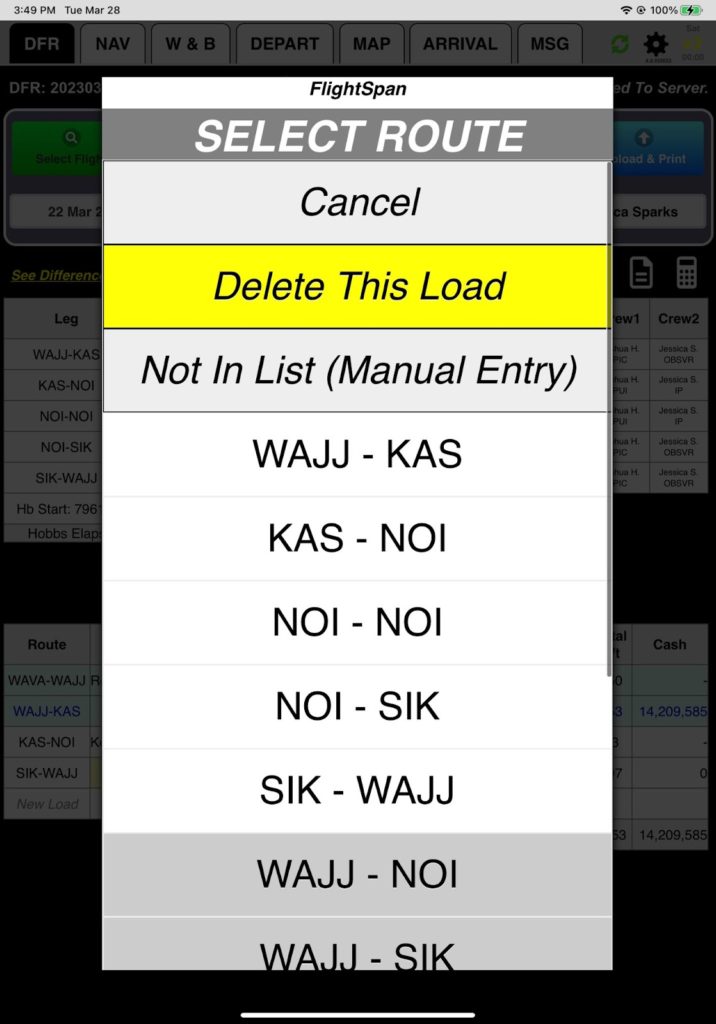
Your SIK-WAJJ load has the Account/Receipt# and Rate cells highlighted since you left them blank, but you elect to leave them blank and let the finance people sort it out after the DFR is uploaded.

Note: If you bill by the hour, it is important that the Mins (minutes) column be filled out accurately. FlightSpan™ Ops does not use Hobbs from the LEGS section for billing purposes.
Upload and Print
Tap Upload and Print
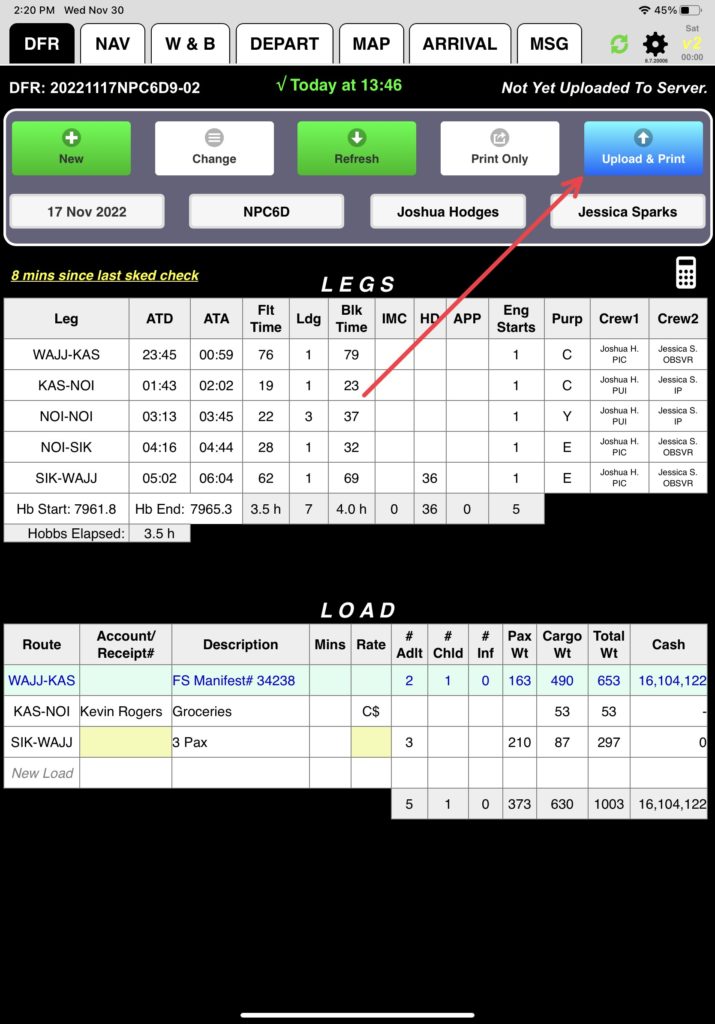
If the DFR fails to upload correctly (such as when the internet connection is interrupted) you will get a warning message.
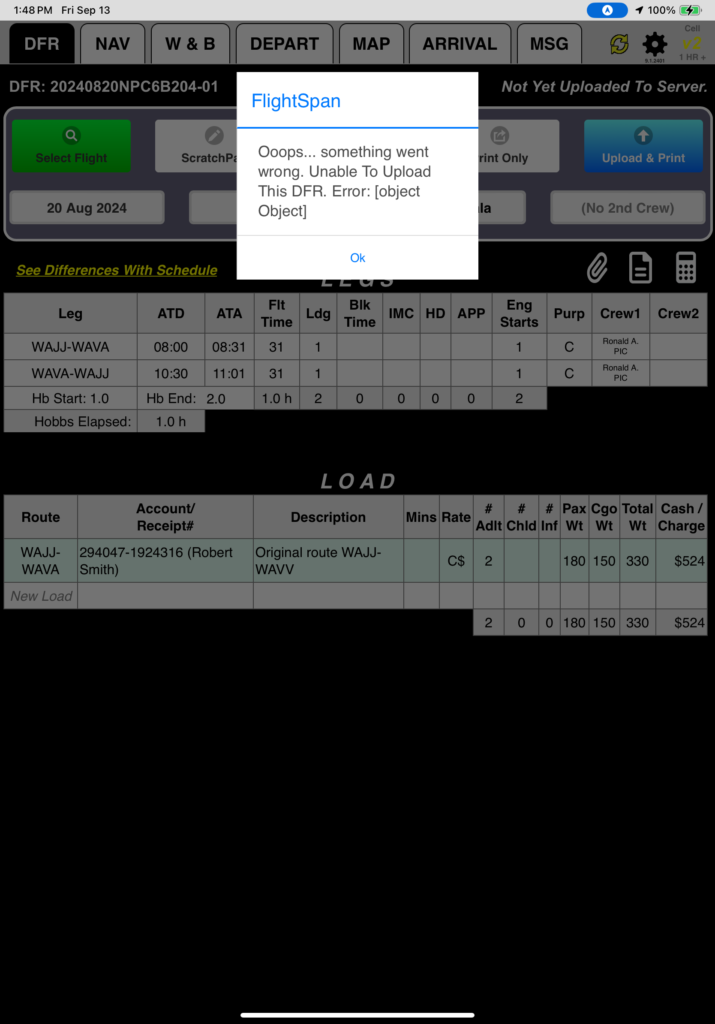
If the PDF of the DFR fails to upload, you will also get a warning message. In either case, try again.

Record Duty Time by verifying and/or changing the times and tapping Submit. FlightSpan™ defaults to 45 minutes before the first takeoff to 45 minutes after the last landing. If the flight crosses midnight Zulu time, adjust either the date or the time to get a correct calculation of duty time. Entering breaks does not affect duty time, unless the default is changed in the company Custom Settings List.

Note that there is a Data Entry Required note on the DFR Loads section to alert office staff that you left something blank. Turn in your printed copy to the Flight Coordinator with any notes or comments hand-written on it as necessary. (Your company procedure may differ.)

You may make changes to the DFR and then select Re-Upload & Print until the flight is opened in FlightSpan™ Ops.

Once the flight has been opened in FlightSpan™ Ops, it is locked on FlightSpan™ and cannot be further changed or reuploaded.

Use the printed copy as necessary to make notes for the flight coordinator / flight records staff and attach any other paper documentation (fuel receipts etc.) to the printed DFR
FlightSpan™ Ops uses the uploaded data in the following ways:
- Information from the LOAD section creating Payments and for billing purposes
- Flight information for scheduling and maintenance forecasting purposes
- Pilot flight and duty time records for scheduling and fatigue management purposes
- Tracking pilot proficiency checks and authorizations
- Block times, landings, crew roles, etc. for the pilot logbooks
- Flight and load information for generating reports
Congratulations! You have completed your planned flight, including learning how to plan the route, and do weight and balance and performance calculations. You learned the automated functions, map features, how to submit NOTAMs and inspection reports, and how FlightSpan™ behaves when remaining in the traffic pattern. You practiced how to practically apply the planning tools at your disposal to enhance safety. You also learned how messaging works, and how to plan and execute a diversion. Finally, in this lesson you learned how to submit the DFR at the end of the flight.
Now that you have completed these training modules, log back in to your company version of FlightSpan™. Use the Scratchpad mode to plan and simulate executing flights in your context to continue building your confidence in how to use the app. Finally, you will have to use it on actual flights in order to fully understand how it functions, and to begin taking advantage of all the powerful tools that FlightSpan™ places at your fingertips.
Video Version

